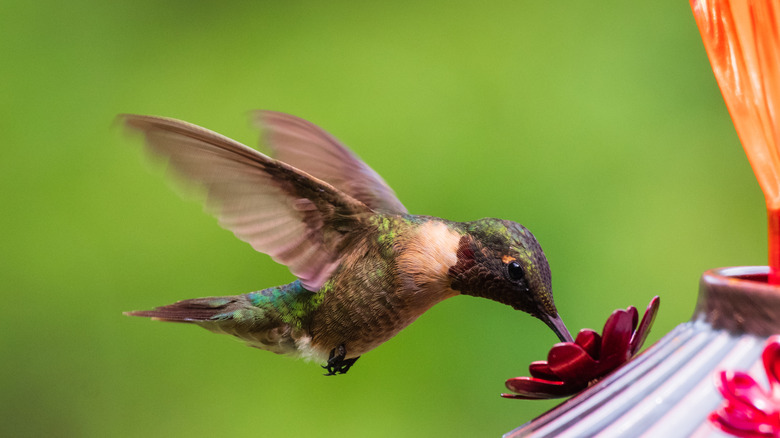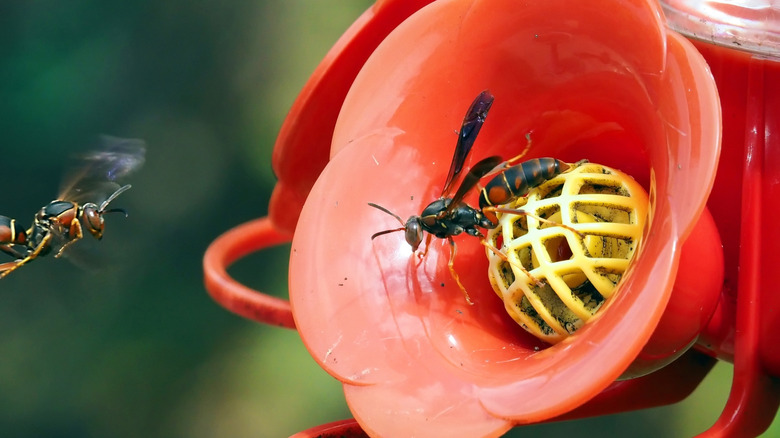What Really Happens When You Leave Hummingbird Feeders Up For Too Long
Providing nectar for hummingbirds is a fantastic way to get a good look at these tiny birds up close. If you don't catch a glimpse of them sipping nectar at a feeder, after all, they have a tendency to zoom by so quickly that you can easily mistake them for large insects. Both glass and plastic hummingbird feeders can be used to attract feathered friends, but what happens when you leave them up too long as these little birds migrate? As long as you take proper care of the feeder, nothing at all.
Hummingbirds — often nicknamed hummers — are hard-wired to migrate, so they won't stick around your yard just because there's a never-ending supply of sugar water readily available. You might notice a straggler or two remaining after the majority have flown away, though. This sometimes happens when birds are getting up there in age, become ill, or are late to nest and can't make the journey. Leaving a feeder up for them isn't a bad idea even in the winter if you're still seeing birds in your locale, as long as you keep your hummingbird feeder from freezing (which occurs at around 27 degrees Fahrenheit with sugar water).
There are also temperate areas in the United States where hummingbirds reside all year long, and it's perfectly fine to leave feeders up to supplement nectar intake. However, if you don't maintain the feeder properly, that's where serious issues crop up.
Leaving your hummingbird feeder up too long without cleaning it
Since there's a chance you might get a late-to-migrate drinker or a class of hummingbird flying out of its normal range stopping by, you now know nothing really bad is going to happen if you leave your hummingbird feeders up for an extended period. That is, as long as you maintain the feeder with the same frequency as when you're seeing more birds visiting. Old nectar in an unclean feeder can result in mold and fungus growth, leading to starvation or fatal gastrointestinal issues when consumed by hummingbirds.
The key to safely cleaning your hummingbird feeder is soaking it in hot water. Adding some hydrogen peroxide or using a weak vinegar solution is also acceptable. It's best to avoid any type of soap, since it can leave detrimental residue. Be sure to scrub every part of the feeder, giving the beak holes some extra attention with a small brush or even a pipe cleaner. Once it's thoroughly dry, you can put the feeder back together and refill it with DIY nectar.
Do this as often as needed – sick birds using it, insects on the feeder, and even tiny amounts of mold are all signals it's time to give your feeder a good scrubbing. Otherwise, clean it every day or so during warm weather and every three or four days when it's cooler. With some loving care, you can leave your feeders up as long as you like without worry.

